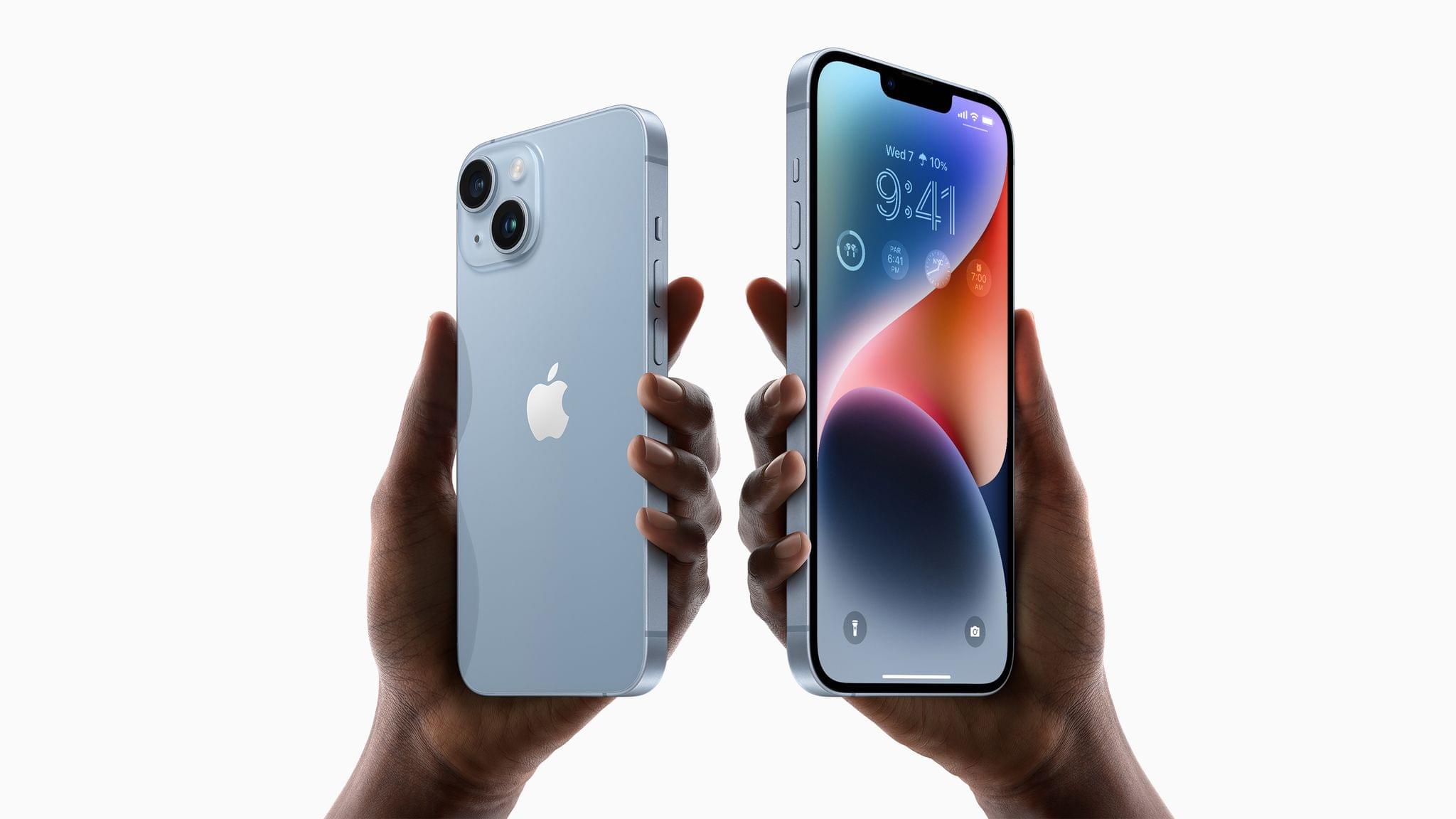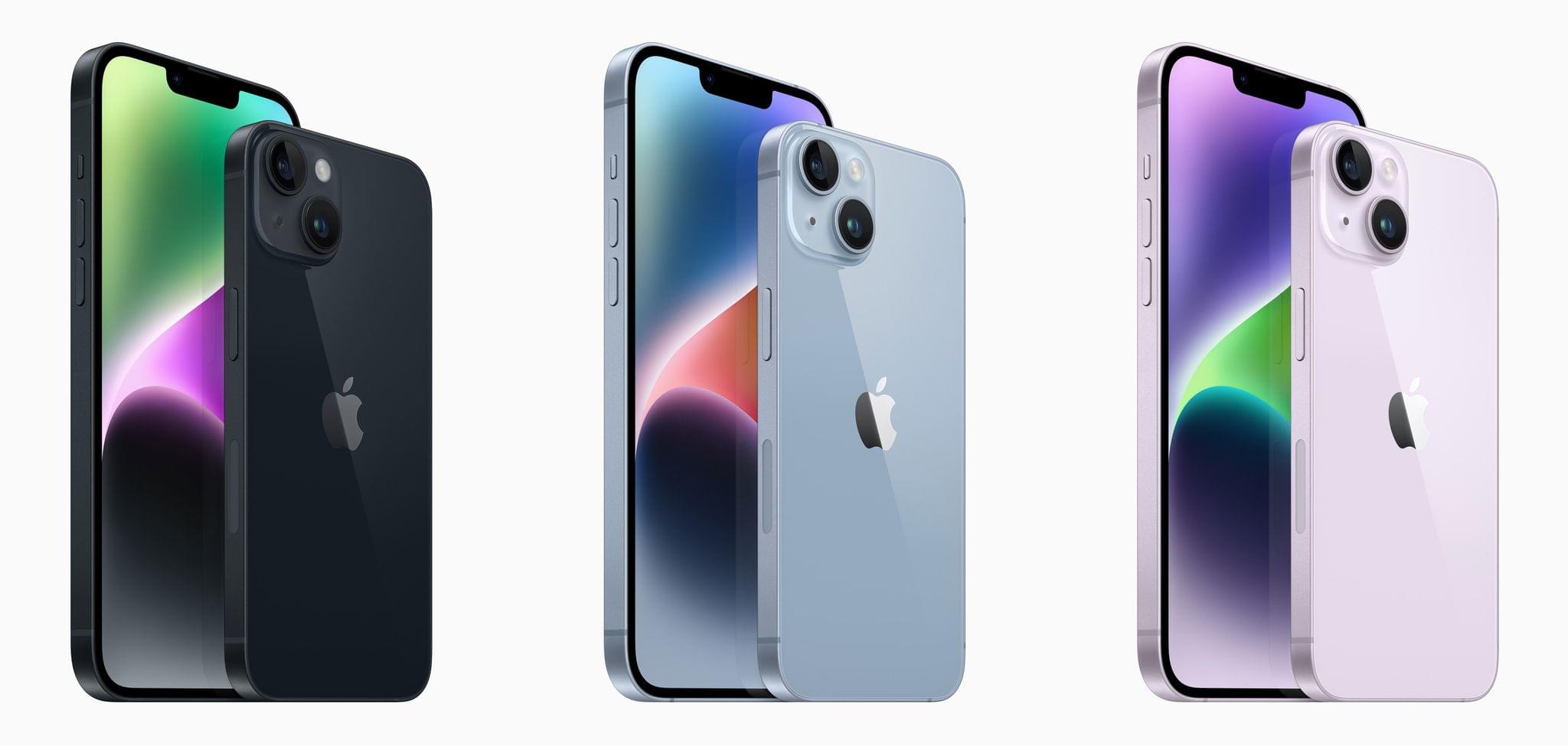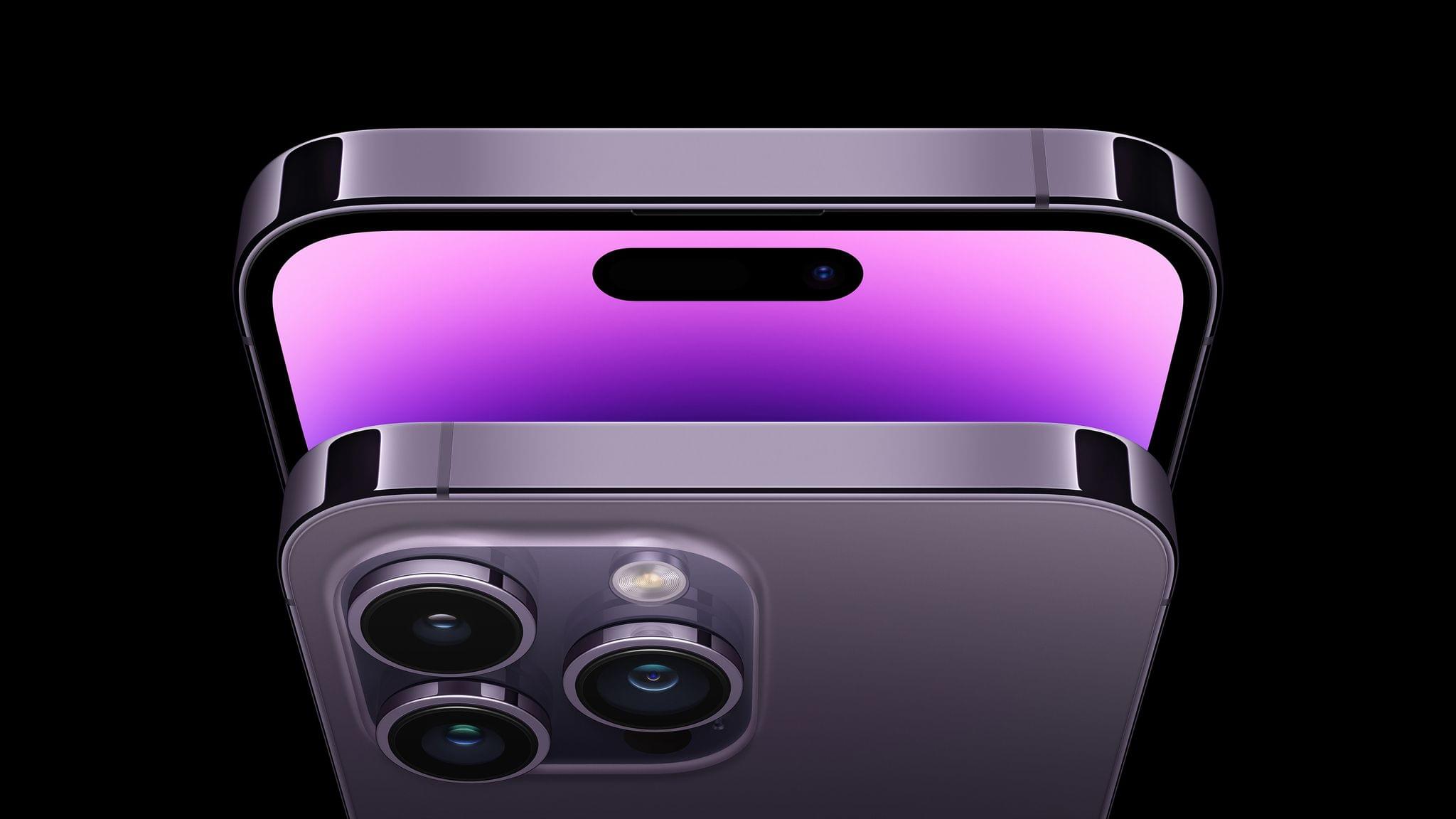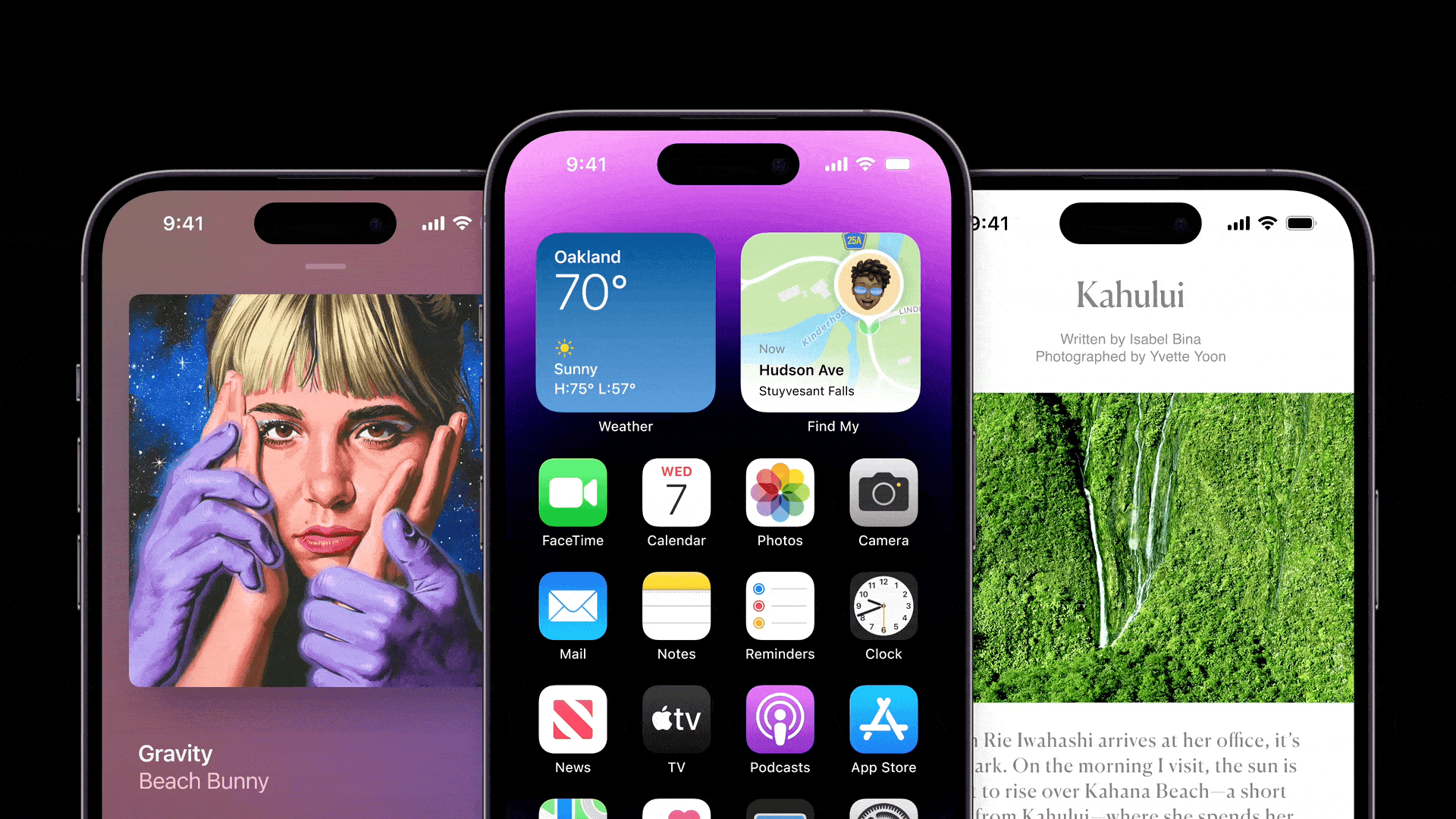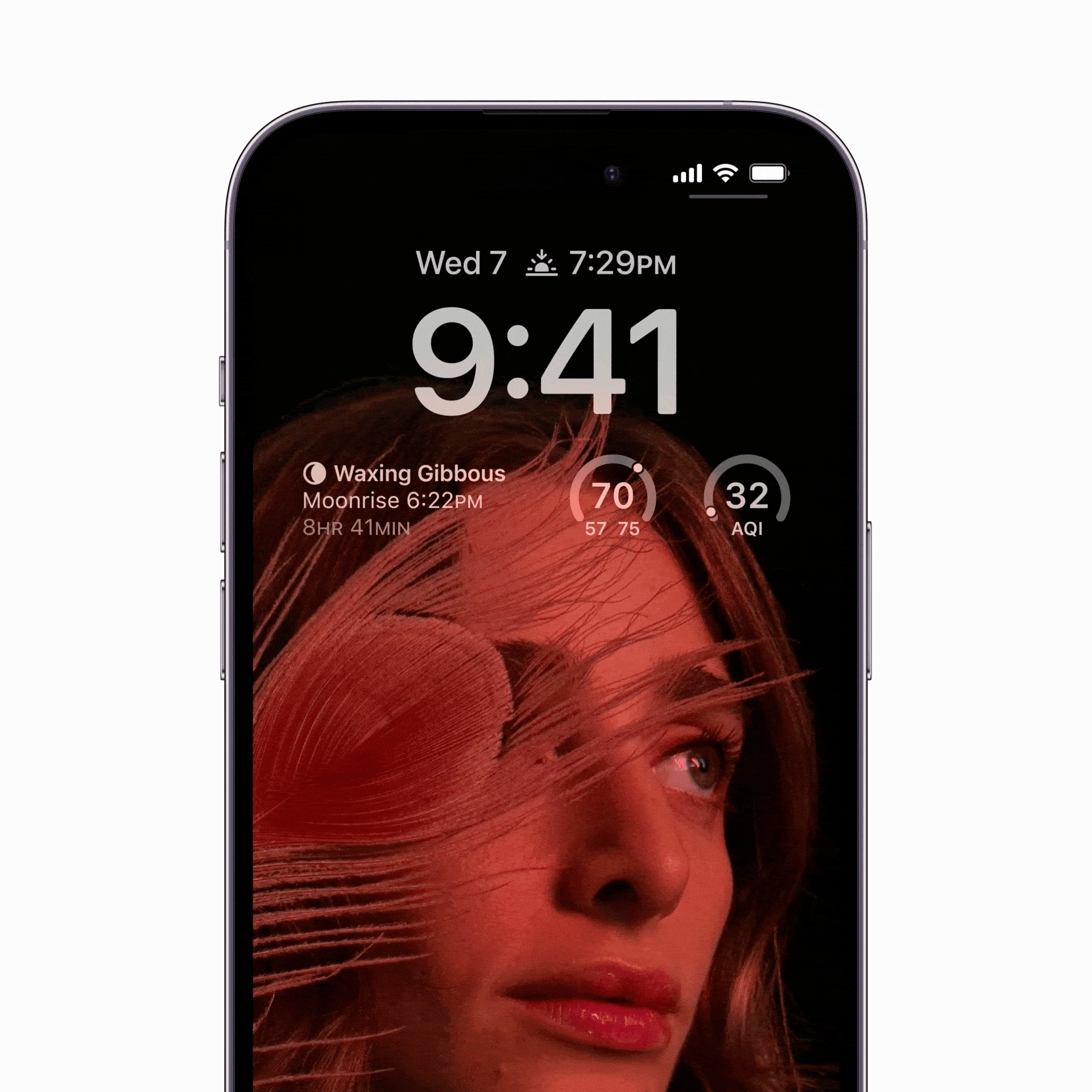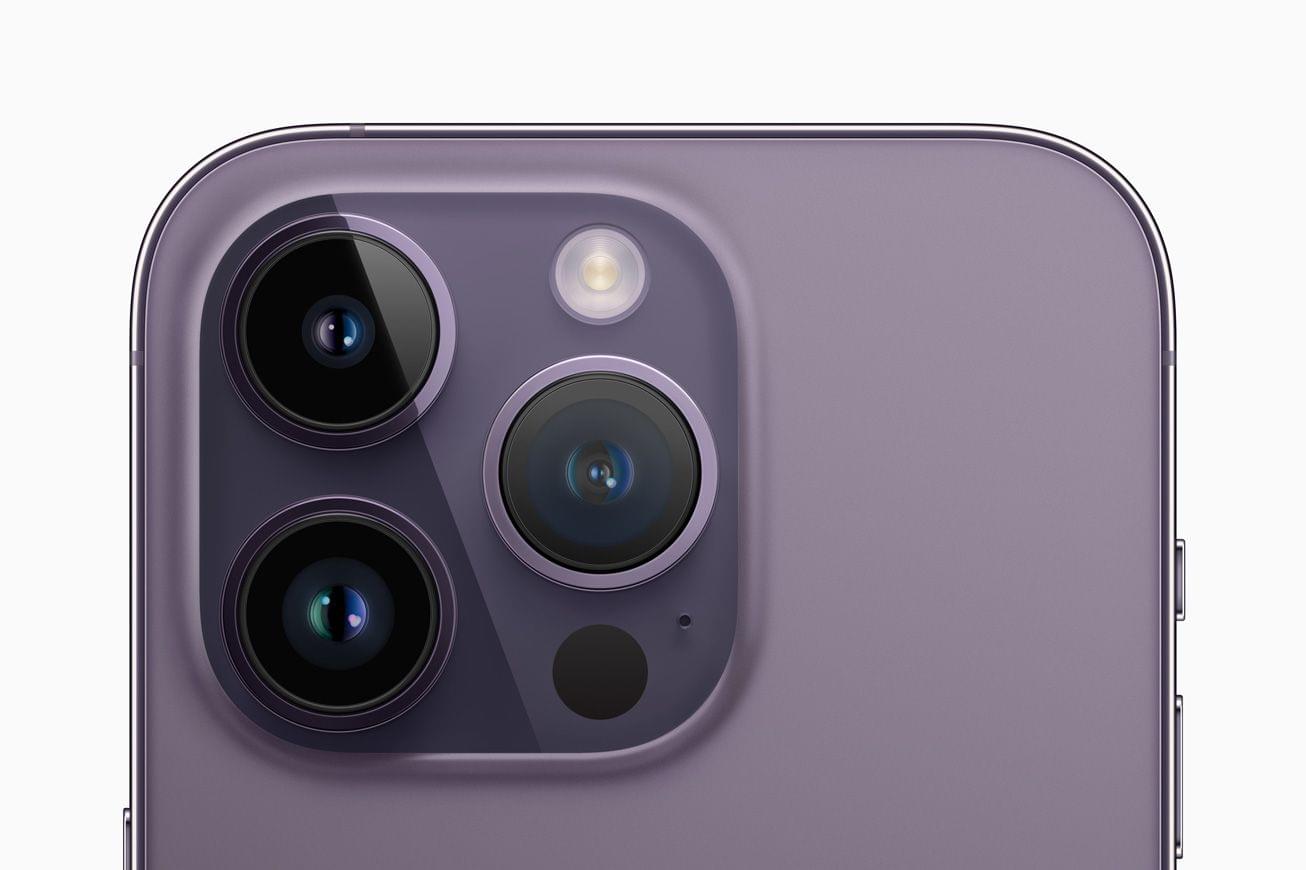As expected, Apple introduced four new iPhone models today, the iPhone 14, the iPhone 14 Plus, the iPhone 14 Pro, and the iPhone Pro Max. There are a lot of new hardware and software features sprinkled throughout the iPhone lineup this year, so let’s dig in.
iPhone 14 and 14 Plus
The iPhone 14 comes in five colors (midnight, blue, starlight, (PRODUCT)RED, and purple) and features a 6.1” display that’s protected by Apple’s Ceramic Shield technology. The Plus model comes in the same colors and has a 6.7” display. The Super Retina XDR OLED displays of both models can reach a peak brightness of 1200 nits and support a 2 million:1 contrast ratio and Dolby Vision. The insides of both models have been redesigned to improve thermal performance, and battery life has been improved too.
As in years past, the Cameras of the iPhone 14 and 14 Plus were a major focus of Apple’s presentation. The company introduced a new name in today’s keynote: the Photonic Engine, which aids with low light performance. According to Apple, that results in up to double the mid- and low-light performance when using the Ultra Wide camera, 2x on the TrueDepth camera, and 2.5x on the Main camera, which is achieved by applying Deep Fusion technology earlier in image processing.
The Main camera has a 12MP sensor with an ƒ/1.5 aperture and 1.9 µm pixels, which will reduce noise and reproduce more details. The TrueDepth camera has gotten a bump in performance, too, with a ƒ/1.9 aperture and autofocus.
Action Mode is a new video mode that smooths out shaky video better than before. Cinematic mode can shoot video in 4K at 30 fps and 4K at 24 fps, the Ultra Wide camera’s low-light performance has been improved, and the True Tone flash is 10% brighter, with more consistent lighting.
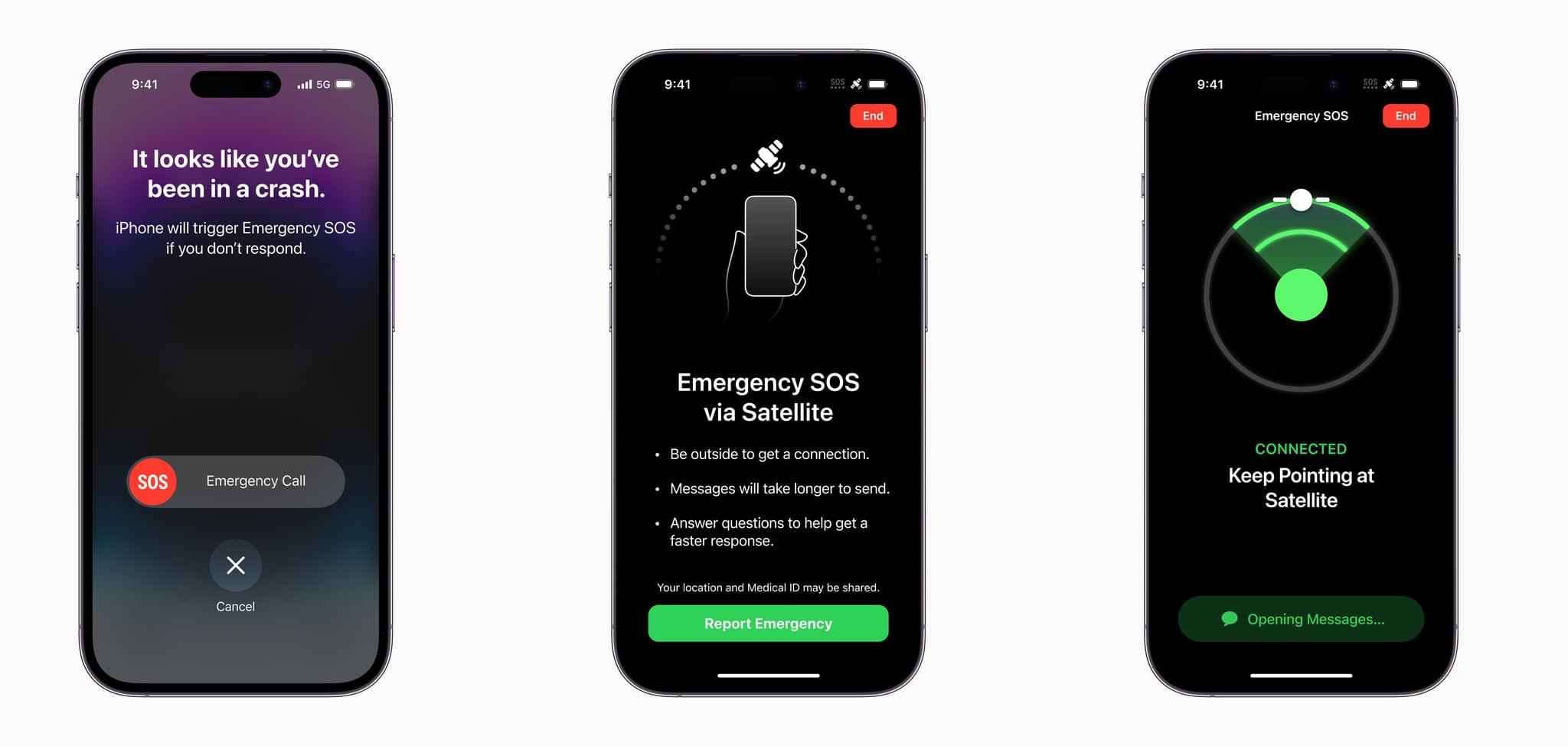
Crash detection and Emergency SOS via Satellite are new safety features coming to all iPhones this year. Source: Apple.
While the iPhone’s camera is a highlight of every iPhone launch, this year, Apple also focused on new safety features across all iPhone models. The first is crash detection. Using a new dual-core accelerometer that can measure up to 256Gs and a new high dynamic range gyroscope, along with the iPhone’s existing barometer, GPS radio, and microphone, allow the iPhone 14 to sense a serious car crash and call emergency services on your behalf. The new crash detection feature works in concert with similar features coming to the Apple Watch Series 8, SE, and Ultra, but an Apple Watch is not required.
The other safety feature coming to all iPhones this year is Emergency SOS via satellite. As Apple explained onstage today, and I recently wrote about in MacStories Weekly, satellite emergency communication systems are usually bulky. However, Apple has managed to build text-based satellite communications into the iPhone with a combination of custom parts and clever software.
Users who are out of range of a mobile signal can use Emergency SOS to call for help. New software built into the iPhone instructs users where to point their iPhone to get the best satellite signal to send a message. The service uses a series of questions and multiple choice answers to assess a person’s situation, and any text sent is compressed, so messages take less time to send. Then, trained operators who receive the calls for help relay the messages to first responders. The feature also works with Find My to let others know your location when you are outside of the range of a cellular or WiFi signal. Emergency SOS is debuting in the US and Canada and will be free for two years.
All iPhone users will be able to use Fitness+ on their iPhones without an Apple Watch too.
The iPhone 14, which starts at $799, and iPhone 14 Plus, which starts at $899, can be pre-ordered in 128GB, 256GB, and 512GB configurations on September 9th, with deliveries starting on the 16th for the iPhone 14 and October 7th for the iPhone 14 Plus.
iPhone 14 Pro and iPhone 14 Pro Max
Like the iPhone 14 and iPhone 14 Plus, the Pro models come in 6.1” and 6.7” screen sizes and feature crash detection and Emergency SOS messaging via satellite, plus a number of other interesting updates.
Improvements in the iPhone’s camera are a given every year, and the Always-On Display that Apple announced was rumored and telegraphed by iOS 16 betas. What no one saw coming was the Dynamic Island, a goofy name for what looks like a very cool feature that blurs the lines between hardware and software in a unique way.
The Dynamic Island combines the iPhone 14 Pro and Pro Max camera housing with software to offer a new way to deliver alerts and other information to users. First, the TrueDepth camera housing is no longer contained in a notch. Instead, it’s in a smaller oval-shaped area just below the status bar.
Apple uses the space around the camera oval to display controls for apps like Music and Phone, but it will also be available to third-party developers to provide status information like sports scores. Interaction is controlled with a tap and hold gesture, and everything animates in a lively and fun way that makes it look like the camera cutout is alive.
The demos of the Dynamic Island were fantastic. I can’t wait to try the feature myself to see what it’s like in day-to-day use, but it strikes me as a great use of the space at the top of the iPhone.
The Pro model iPhones are also gaining an Always-On display, which will make the Lock Screen widgets coming to iOS 16 even more useful. The screen dims when locked and refreshes as slowly as 1Hz, which, combined with other power-saving strategies, has enabled this feature for the first time on an iPhone. When dimmed, the Always-On display continues to update the time, widgets, and Live Activities, another upcoming iOS 16 feature.
The display of the iPhone 14 Pro and Pro Max is matching the brightness of the Pro Display XDR for the first time this year, too, with a peak brightness of 2000 nits, double the iPhone 13 Pro.
The third leg of the iPhone 14 Pro and Pro Max stool is a big step forward for their cameras. Both iPhones feature a 48MP quad-pixel Main camera, which is the camera that Apple used to call Wide. Every four pixels are combined into one bigger pixel to keep the size of images to 12MP for most shooting modes, but the extra pixels allow for better low light performance and a new 2x Telephoto option. The Pro models can shoot a full 48MP image using Apple’s ProRAW format.
Like the iPhone 14 and 14 Plus, the new Pro models feature the Photonic Engine for improved low light performance. Apple says the low light performance has been improved up to 2x with the Main camera, 3x for the Ultra Wide camera, and 2x for the Telephoto camera.
In addition, there is a new 12MP Ultra Wide camera, an improved TrueDepth camera with an 𝑓/1.9 aperture for better low-light performance, and a new Adaptive True Tone flash that uses 9 LEDs that change depending on the focal length of a shot. Like the iPhone 14 and iPhone 14 Plus, the Pro models also shoot Cinematic mode in 4K at 30 fps and 4K at 24 fps and feature the new Action mode for improved video stabilization.
There’s a new SoC for the iPhone 14 Pro and iPhone 14 Pro Max too. Apple says that the 6-core A16 Bionic is 40% faster than its competitors but hasn’t said how it compares to the A15. The 5-core GPU has 50% more memory bandwidth and a 16-core Neural Engine that can run 17 trillion operations a second. Together the tech in the iPhone enables it to perform up to 4 trillion operations per photo too.
The iPhone 14 Pro and Pro Max are available in deep purple, silver, gold, and space black in 128GB, 256GB, 512GB, and 1TB configurations for $999 and $1099, respectively. Pre-orders begin September 9th, with deliveries beginning September 16th.
You can follow all of our September 2022 Apple event coverage through our September 2022 Apple event hub or subscribe to the dedicated September 2022 Apple event RSS feed.


